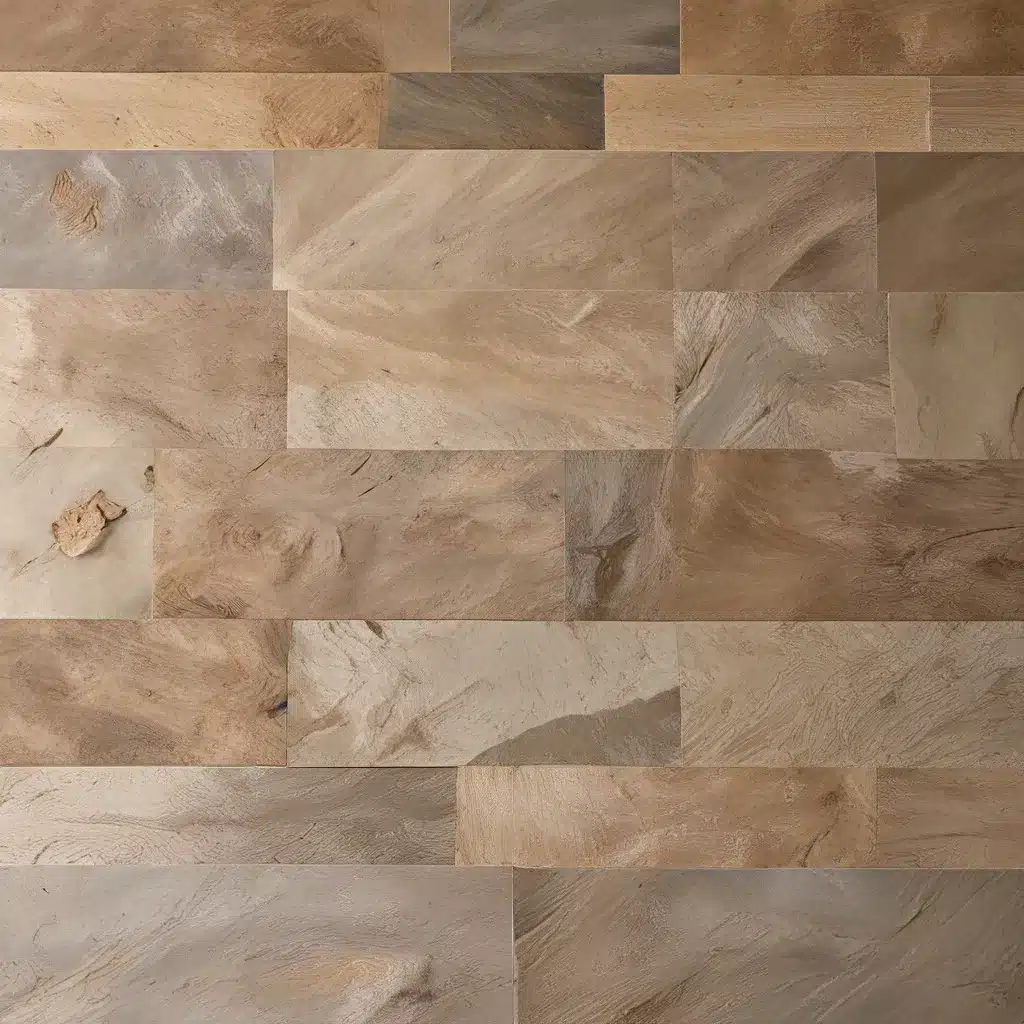
In the realm of interior design, the true magic lies in the artful layering of patterns and textures. This sophisticated approach transforms spaces from the mundane to the mesmerizing, infusing depth, character, and visual interest into every corner. By skillfully blending diverse materials, colors, shapes, and forms, designers can create living environments that are not only beautiful but also captivating and aesthetically pleasing.
Harmonizing Contrasts: The Key to Visually Captivating Spaces
At the heart of this design philosophy is the art of harmonizing contrasts. By balancing bold with subtle, vibrant with muted, and intricate with simple textures and patterns, designers can create a sense of equilibrium and depth within a space. It’s the juxtaposition of elements that might seem opposing at first glance, but when layered thoughtfully, they create a delightful visual interplay that adds dynamism and sophistication to any room.
For instance, imagine pairing a vibrant geometric rug with solid-colored furniture. The bold, eye-catching pattern of the rug contrasts beautifully with the more subdued tones of the furniture, resulting in an engaging and balanced look that draws the eye and captivates the senses.
Mastering the Art of Scale
Equally important in the layering process is the mastery of scale. Akin to orchestrating a visual symphony, the magic lies in the artful juxtaposition of various pattern and texture sizes. By pairing large-scale patterns with their smaller counterparts, designers can create an engaging harmony that adds depth and interest to a room.
Whether it’s a bold, oversized rug against delicate textiles or grand, sweeping motifs balanced with intricate details, the skillful blending of scales in layering brings a unique rhythm and energy to the design composition. This visual interplay keeps the eye engaged, constantly discovering new elements and sights within the space.
Uniting Themes: Weaving a Cohesive Narrative
But the true mastery of layering lies in the ability to unite themes and create a cohesive narrative within the space. It’s akin to composing a story, where each pattern and texture serves as a chapter, seamlessly integrated under a unified theme or color palette.
Perhaps it’s marrying geometric patterns with nature-inspired textures, or blending diverse cultural motifs harmoniously. Regardless of the specific design approach, a cohesive theme acts as the guiding thread, ensuring that every layer contributes to the overall narrative. This thoughtful cohesion not only ties the elements together but also fosters a sense of balance and elegance, resulting in a space that feels harmonious and inviting.
Tactile Sensations: The Power of Textural Layering
Beyond the visual realm, the strategic layering of textures also plays a crucial role in creating visually captivating and inviting spaces. Textures evoke tactile sensations, adding depth and warmth to the living environment.
One powerful technique is the layering of fabrics, such as sumptuous velvet, breezy linen, or luxurious faux fur. Each fabric brings its unique texture, adding depth and character to the space. Velvet, for instance, exudes an air of opulence, inviting touch and creating a sense of richness, while linens’ natural, breathable qualities offer an understated elegance. Introducing faux fur can infuse warmth and coziness, contributing a luxurious and inviting element to the space.
But it’s not just about fabrics; the inclusion of natural elements like wood, stone, or woven materials can also bring a touch of the outdoors inside, adding depth and visual interest to the design.
The Orchestrator of Ambiance: Lighting’s Role in Layered Design
Lighting plays a crucial role in the symphony of layered design, acting as the orchestrator of ambiance. The subtle interplay between various light sources – ambient, task, and accent – contributes to the layered effect, transforming the space.
Ambient lighting sets the overall tone, while task lighting serves functional purposes in specific areas. Accent lighting, such as spotlights or uplights, adds drama and highlights architectural features or decor elements, drawing the eye and creating a sense of depth and dimension.
Balancing Act: Mastering the Art of Layering
The key to mastering the art of layering patterns and textures lies in the delicate balance between these elements. It’s a carefully choreographed dance, where each component plays a crucial role in the overall composition.
One important strategy is to use patterns and textures strategically to highlight focal points. A patterned accent wall or a textured statement piece can draw attention without overpowering the space, creating a harmonious and visually captivating environment.
When layering, it’s also essential to approach it gradually, starting with a base layer and gradually adding patterns and textures. This step-by-step approach allows for adjustment and ensures a cohesive outcome, where each element seamlessly builds upon the next.
Ultimately, the art of layering patterns and textures is a reflection of your personal expression and style. Let your individuality shine through the decor, mixing and matching elements that resonate with you. This creates a space that is not only visually stunning but also truly your own, imbued with the warmth and character that only you can bring.
Embracing the Layers, Embracing the Textures
Mastering the art of layering patterns and textures opens a world of creative possibilities in interior design. Experiment, explore, and fearlessly combine diverse elements to curate a space that reflects your unique vision and invites warmth and visual intrigue into every corner.
Embrace the layers, embrace the textures, and watch your home come alive with newfound depth and character. Remember, the beauty of design lies in the journey of discovery, where each layer reveals new wonders and inspires the senses. So, dive in, and let your creativity soar!

